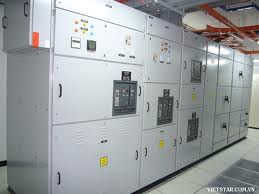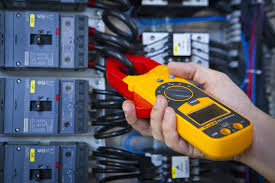Home › Electrical Engineering Forum › General Discussion › Maintaining Low Voltage Switchboard (Tutorial)
- This topic has 1 reply, 2 voices, and was last updated 10 years, 1 month ago by
Anonymous.
-
AuthorPosts
-
2014/11/05 at 12:35 pm #11206
admin
KeymasterFew weeks ago, we received this nice comprehensive guide in our boxmail. An electrical engineer sent it to us in order to help our junior maintenance technicians in the community who read the blog a lot!
Introduction
Irrespective of the usage, electrical components tend to develop inconsistencies, just like any other components, as they age. Faults developed in electrical components, especially, in critical equipment such as switchboards and circuit breakers, are largely governed by the environmental conditions such as humidity, corrosiveness in the atmosphere, dust, dirt, etc.
Other factors that can affect switchboard efficiency are: operating loads, age of the equipment, current harmonics and poorly recorded maintenance reports.
In order to make sure that your low voltage switchboard operates properly and lasts long, it is imperative that you conduct preventive maintenance at regular intervals with the help of qualified professionals.
Following are some important guidelines to be followed while maintaining a low voltage switchboard:
Update Maintenance Records
- All the switchboard installations, both old and new, should be recorded properly and promptly scheduled for regular maintenance;
- Whenever you conduct a routine check-up or perform a preventive maintenance, update what you have done in the maintenance records for future reference;
- Maintenance records should contain all the information of the switchboards such as, equipment description, data on the nameplates, specifications of critical components, instruction booklets, list of replaced parts, installation guides and drawings;
- It should also contain details of the components that are yet to be tested and results of the already tested components.
What equipment is needed for regular switchboard maintenance?
Maintenance shop should include:
- Stock of components that are critical for smooth operation
- Testing cabinet or testing racks, to test circuit breakers
- Alternative power supply to test the switchboard before returning it to service
- Multimeters
- Ammeters
- Instrument transformers
- Lifting mechanism to lift large circuit breakers
- Insulation tester, etc.
What tests have to be conducted to ensure smooth operation of the switchboard?
- Insulation tests to check the resistance: Insulation tests should be conducted regularly to check the resistance of the bus and circuit breakers. It is understood that there are no specific parameters that confirm satisfactory insulation.
Nevertheless, the readings you record regularly during the tests, when the system is working normally, can serve as a yardstick in taking necessary action if the readings are much lower compared to the regular ones.
- Potential Tests: These tests are required when a maintenance, repair or replacement is conducted on the main circuit, which is also known as bus assembly. Otherwise this is not compulsory regular test and can be scheduled for long intervals, say every two years.
- Operation test: After the switchboard is serviced, repaired or replaced, it is required that you conduct an isolated operating test by connecting the switchboard to a separate source of power supply.
This test is conducted to make sure that everything is OK, before use the switchboard for regular service purposes.
Benefits of regular switchboard maintenance
- Longer life
- Less replacements
- Reduced power outages and increased operating efficiency
- Improved performance of the plant on the whole
- Considerable savings over the long run
In order to reap the above mentioned benefits, utmost care should be taken to see that the maintenance is undertaken by qualified and appropriately registered maintenance personnel.
Care should also be taken to ensure that the recommendations (for maintenance) made by the manufacturer are followed promptly.
After reading this tutorial for beginners, what do you think and what can you add about the topic?
2014/12/04 at 6:03 pm #13623Anonymous
GuestI would add 3 major maintenance operations often forgotten and that can lead (personal experience ) to desastrous if not lethal situations:
. connectors and lugs : regular connections tightening is key; vibrations (natural or related to human activity), heating/cooling throughout the year or within the day cause loosening of screws and nuts (unless they are of spring type); once a year fastening campaign is a very good practice
. thermography: overheating in some parts of the panelboard are common; they can be due to loosening connections (see above), or simply repeated overloads or simply aging of components (in particular electronics like load shedders, regulations,..) but also simple contactors coils; again regular campaigns are useful to “spot hotspots”, but they must be carried out when power usage is at its peak, not during summer breaks…
. filters : some panelboards, in particular embedding control (PLCs, relays, and the like) are ventilated or air-conditioned to prevent excessive heating (and thus switching and then damage) of components ; they have filters to prevent dust from entering he panel and worsening the situation; however filters are subject to clogging, and depending on dust conditions this can be as fast as a week (not to mention atmospheric turmoils like sand tornados in hot areas); therefore regular campaigns of filter change is also a very sound practice
I was told that able to alert in case of filter clogging, based on clogging sensors or ventilation/temperature sensors, but never tested; if someone has experience on that I’d be glad to hear (or read..) about it -
AuthorPosts
- You must be logged in to reply to this topic.

